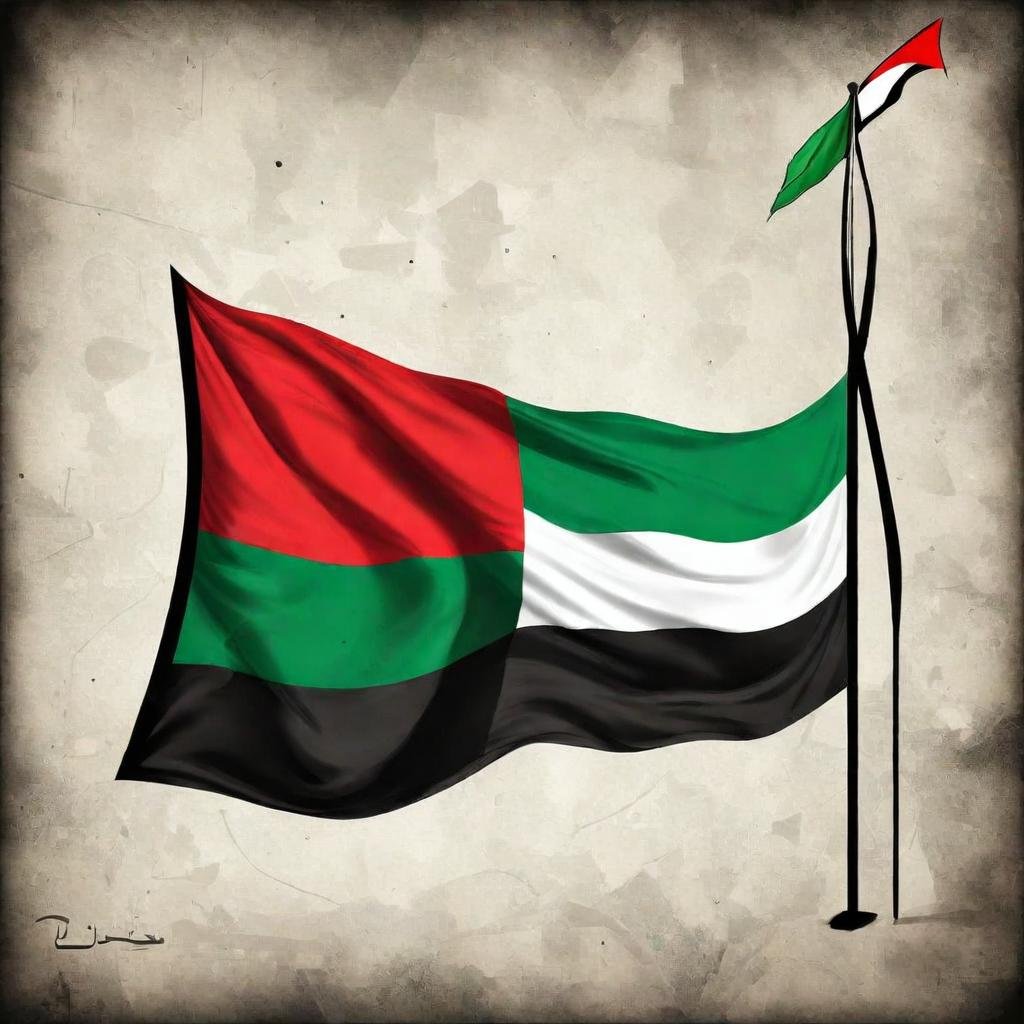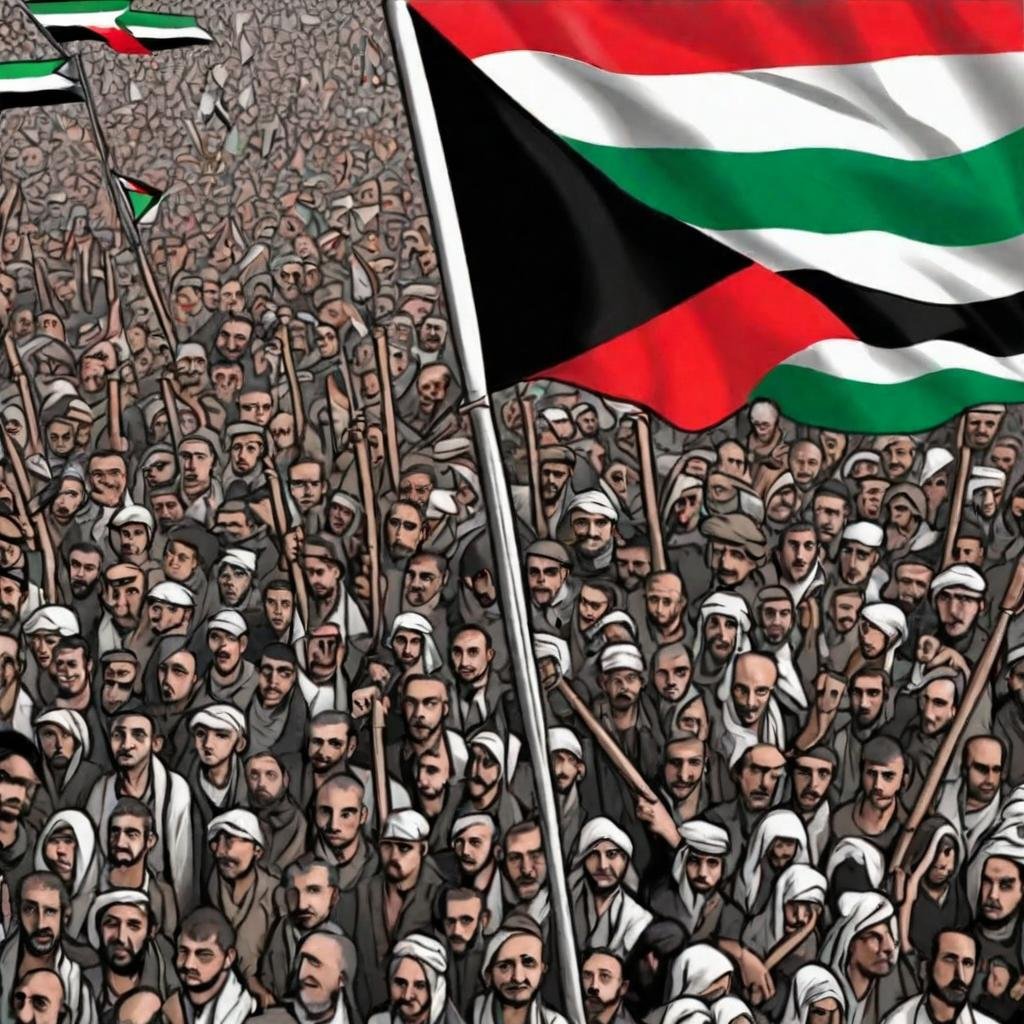I. Introduction
The Palestine Flag stands as a strong image of legacy and expectation for a large number of Palestinians around the world. Its tones and plan components address the well established battle, flexibility, and desires of the Palestinian public. This blog entry digs profound into the verifiable foundation, imagery, and contemporary meaning of the Palestine Flag, investigating its part in molding public personality and motivating expect a more promising time to come.

II. Historical Background
The historical backdrop of the Palestine Flag is profoundly interlaced with the locale’s wild past and the Palestinian battle for self-assurance. The Flag, as far as we might be concerned today, was first taken on by the Bedouin Revolt in 1916 contrary to Ottoman rule, utilizing similar varieties yet in an alternate plan. This verifiable association established the groundwork for its later reception by the Palestinian public.
**Origins of the Palestine Flag**
The Palestine Flag was authoritatively taken on by the Palestinian Freedom Association (PLO) in 1964, and later by the Palestinian Public Power (PNA). The Flag’s plan is motivated by the Container Bedouin tones, which address the solidarity and character of Middle Easterner countries. These varieties — dark, white, green, and red — have establishes in the Middle Easterner Revolt banner and represent different authentic Bedouin traditions.
Key Historical Events Leading to Its Adoption
1916: The Middle Easterner Rebel against the Ottoman Domain denoted the principal utilization of the Dish Bedouin tones.
- 1920: The San Remo Meeting perceived the Palestinian regions under English Command, during which the banner turned into an image of Palestinian patriotism.
- 1964: The PLO formally embraced the banner, cementing its status as an image of Palestinian character.
- 1988: The Palestinian Announcement of Freedom reaffirmed the Flag as the authority image of the Territory of Palestine
Changes and Adaptations Over the Years
While the essential plan of the Palestine Flag has stayed reliable, its utilization and imagery have advanced. At first an image of Middle Easterner solidarity, it has developed to address Palestinian yearnings for freedom and statehood explicitly.
III. Imagery and Significance
The Palestine banner’s plan is rich with imagery, each tone and component addressing key parts of Palestinian personality and history.
Detailed Analysis of the Colors and Their Meanings
- Red: Represents the penances and carnage of the individuals who have battled for Palestine’s opportunity and autonomy. It addresses the fortitude and assurance of the Palestinian public.
- Green: Addresses the place that is known for Palestine, its ripeness, and the expectation for development and thriving. It additionally means Islam, the overwhelming religion of the area.
- White: Represents harmony, immaculateness, and the Palestinian nation’s desire for harmony and concurrence.
- Black: Addresses the persecution and difficulties persevered by the Palestinians. It likewise represents strength and the assurance to conquer difficulty.
*The Meaning of the Flag’s Plan Elements*
The banner comprises of three level stripes (dark, white, and green) and a red triangle at the crane. This plan mirrors the Dish Bedouin tones as well as recounts an account of solidarity, battle, and trust. The red triangle focuses to one side, representing progress and the positive headway towards accomplishing Palestinian yearnings.
IV. The Palestine Flag in Contemporary Context
In this day and age, the Palestine banner is something other than a public image; it is a portrayal of the Palestinian nation’s continuous battle and their expectation for a sovereign state.
Usage of the Flag in Modern-Day Palestine and Worldwide
The Flag is a typical sight at fights, rallies, and global occasions supporting for Palestinian privileges and freedom. It is flown gladly at Palestinian homes, government structures, and during huge public occasions like Nakba Day and independence Day.
The Flag’s Role in Protests, Rallies, and International Events
From nearby exhibitions in the West Bank and Gaza to global fights in significant urban communities all over the planet, the Palestine Flag is a noticeable image of fortitude and obstruction. It joins Palestinians and their allies in a common reason and causes worldwide to notice their predicament.
How the Flag Represents the Palestinian Identity and Unity
The Flag fills in as a bringing together image for Palestinians, both in the country and in the diaspora. It exemplifies their aggregate personality, social legacy, and the common long for a free Palestine. The Flag’s presence in different types of media, craftsmanship, and writing further supports its importance in Palestinian culture.
V. The Flag as an Image of Legacy
The Palestine Flag is well established in the social legacy of the Palestinian public, mirroring their rich history, customs, and imaginative articulations.
The Social Meaning of the Flag in Palestinian Heritage
The Flag is a focal component in Palestinian social works on, including customary weddings, celebrations, and other public occasions. It is much of the time showed close by other social images, like customary attire and handiworks.
Stories and Customs Related with the Flag
Numerous Palestinian families have passed down accounts of opposition and strength related with the Flag. These stories frequently feature the penances made by past ages in the battle for freedom and the persevering through trust for a superior future.
The Flag in Palestinian Expressions, Writing, and Folklore
The Palestine Flag as often as possible shows up in Palestinian craftsmanship and writing, representing public pride and the battle for opportunity. Specialists and journalists utilize the flag to pass on strong messages of trust, obstruction, and solidarity. Fables and tunes additionally commend the flag, accentuating its job in the Palestinian character.
VI. The Flag as an Image of Trust
Past its verifiable and social importance, the Palestine banner fills in as an encouraging sign for Palestinians, representing their yearnings for harmony, equity, and a sovereign state.
The Role of the Flag in Inspiring Hope and Resilience Among Palestinians
For some Palestinians, the flag is a wellspring of motivation and strength. It addresses their unfaltering assurance to accomplish their privileges and opportunities. The flag’s presence in the midst of difficulty and struggle fills in as a sign of their persevering through soul and the chance of a more promising time to come.
Individual Stories and Tributes from Palestinians About the Flag’s Impact
Various individual stories feature the profound association Palestinians have with their flag. For example, youthful activists frequently relate how the flag propelled them to take part in fights and promotion endeavors. Families share recollections of waving the flag during critical minutes, representing their solidarity and expectation for a superior future.
The Flag With regards to the Palestinian Battle for Freedom and Peace
The Palestine flag is a steady sign of the Palestinian public’s battle for freedom and harmony. It represents their right to self-assurance and their continuous endeavors to accomplish an only goal to the contention. The banner’s job in harmony exchanges and strategic endeavors highlights its significance as an image of trust and desire.

VII. Frequently Asked Questions (FAQs)
What do the shades of the Palestine Flag represent?
The shades of the Palestine Flag — red, green, white, and dark — represent the penances, land, harmony, and flexibility of the Palestinian public. They mirror the authentic and social meaning of the flag in addressing Palestinian personality and yearnings.
When was the Palestine Flag formally adopted?
The Palestine flag was formally embraced by the Palestinian Freedom Association (PLO) in 1964. It has since been perceived as the public flag of the Province of Palestine and the Palestinian Public Power (PNA).
Who planned the Palestine flag?
The plan of the Palestine flag depends on the Middle Easterner Revolt flag, which was made during the Bedouin Rebel contrary to Ottoman rule in 1916. The specific originator of the flag isn’t indisputable, however it draws motivation from the Skillet Middle Easterner tones that represent Bedouin solidarity and personality.
How has the Palestine banner advanced over time?*
The fundamental plan of the Palestine banner has stayed steady, however its utilization and imagery have developed. At first an image of Bedouin solidarity, it has developed to address Palestinian desires for freedom and statehood explicitly.
What is the meaning of the Palestine Flag in global contexts?
The Palestine flag is an unmistakable image in global settings, particularly during fights, rallies, and strategic occasions. It addresses fortitude with the Palestinian reason and causes worldwide to notice their battle for privileges and autonomy.
How is the Palestine Flag utilized in social and political events?
The flag is generally utilized in social and political occasions, including public occasions, fights, and worldwide get-togethers. It is shown at homes, government structures, and during critical minutes to represent Palestinian character and solidarity.
Which job does the Palestine Flag play in the Palestinian identity?
The Palestine flag assumes a critical part in forming and supporting Palestinian character. It epitomizes their aggregate legacy, social pride, and the common long for a free Palestine. The flag’s presence in different types of media, workmanship, and writing further hardens its importance in Palestinian culture
Why is the Palestine flag considered a symbol of hope?
The Palestine banner is viewed as an image of trust since it addresses the Palestinian nation’s yearnings for harmony, equity, and a sovereign state. It fills in as a sign of their getting through soul and the chance of accomplishing their freedoms
VIII. Conclusion
The Palestine Flag is something other than a public insignia; it is a strong image of legacy and expectation for the Palestinian public. Its rich history, significant imagery, and contemporary importance feature its job in molding Palestinian personality and moving an aggregate vision for what’s to come. As the Palestinian public proceed with their battle for freedom and harmony, the banner remaining parts a consistent sign of their versatility and assurance.
IX. References
“The Historical backdrop of the Palestine Flag.” Palestinian Scholastic Culture for the Investigation of Foreign relations (PASSIA).
“Imagery of the Palestinian Flag.” Al Jazeera.
“Palestinian Public Images.” Palestinian Public Power (PNA) official site.
“The Palestinian Flag and Its Importance.” Center East Screen.
“Shades of the Middle Easterner Revolt Flag.” Reference book Britannica.
- Secret Benefits of Reading Before Bed 2024
- Janitor man-made intelligence: Reforming Upkeep in the Time of Mechanisation 2024
- Merry Christmas in Surprising Seasons: Embracing Early Party 2024
- “Baby Gronk Dominates: Redefining Youth Football in 2024”
- 49ers vs. Kansas City Chiefs: Analyzing Player Stats and Performance Trends

2 thoughts on “Palestine Flag: Symbol of Legacy and Hope 2024”